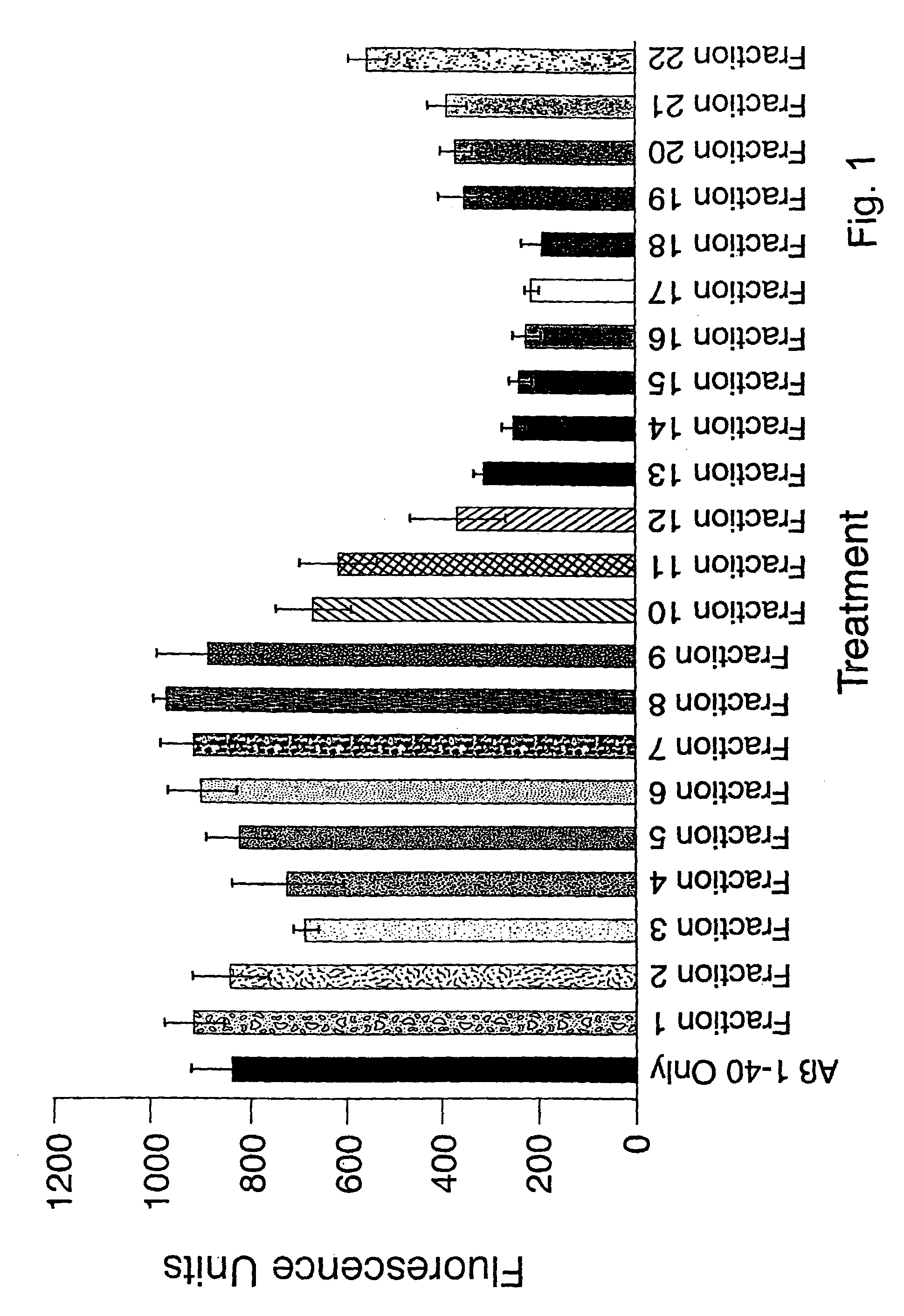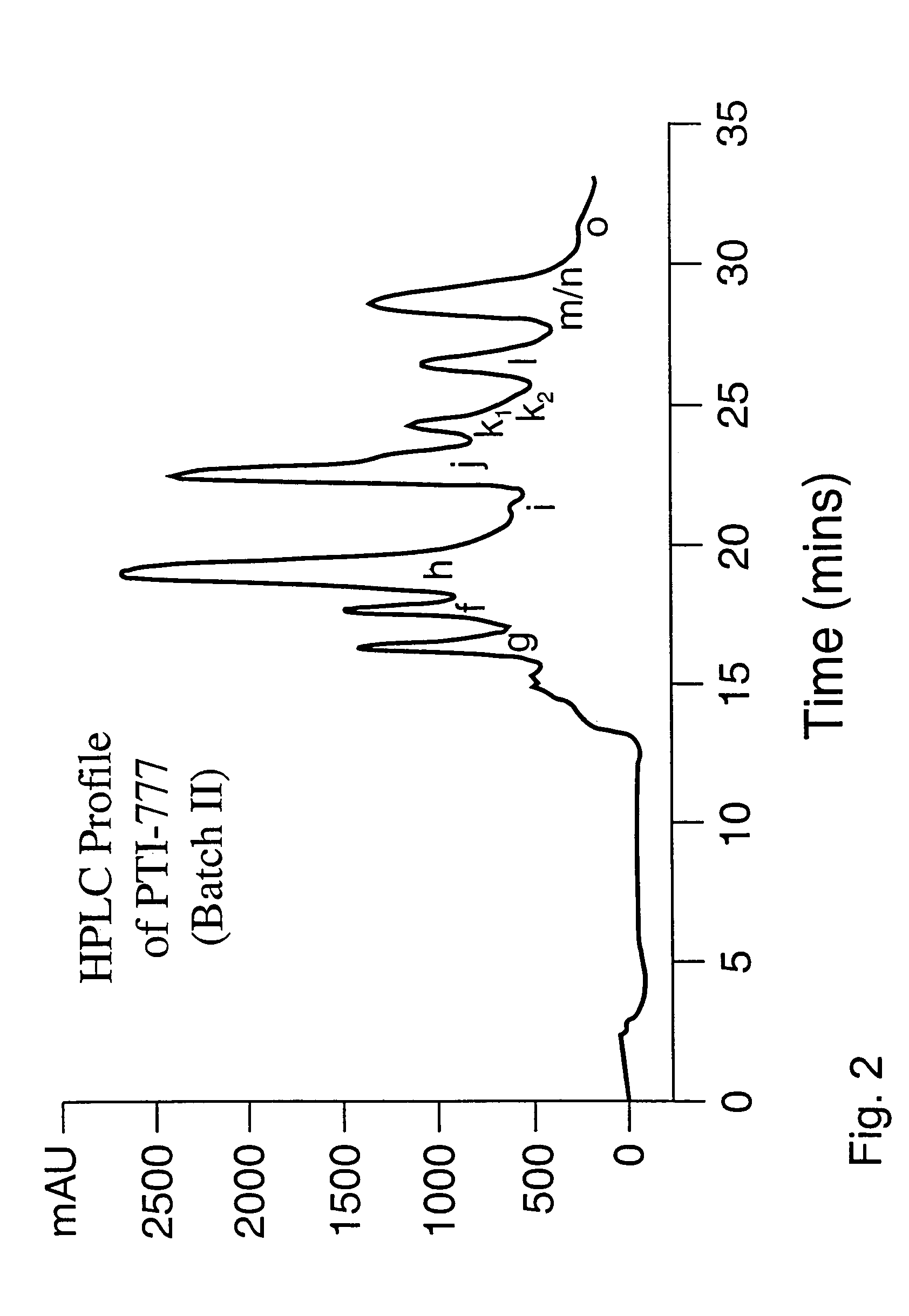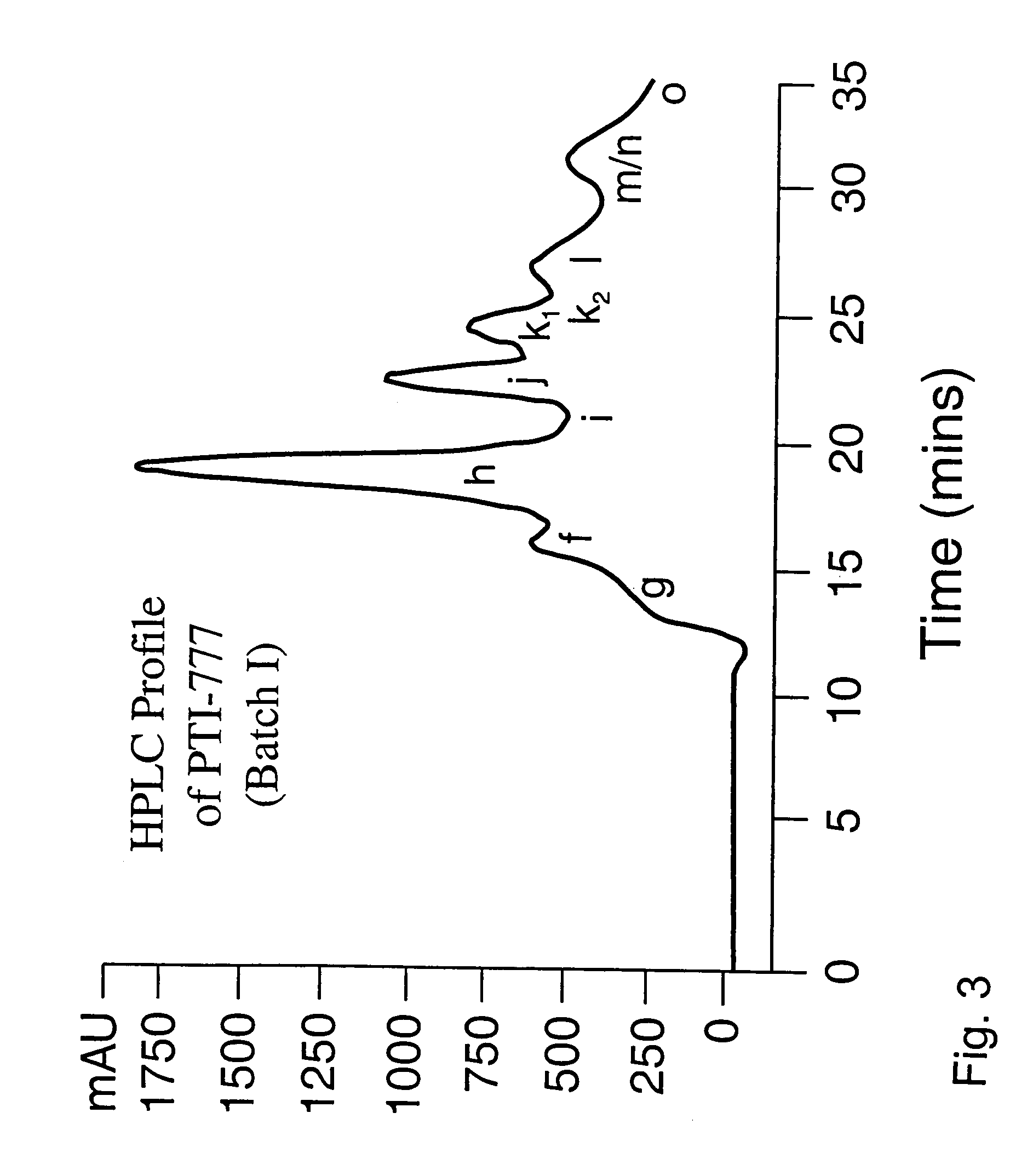Methods of isolating amyloid-inhibiting compounds and use of compounds isolated from Uncaria tomentosa and related plants
an amyloid inhibitor and compound technology, applied in the field of amyloid inhibitors derived from uncaria tomentosa, can solve the problems of toxic and neuronal cell death, no cure or effective treatment, etc., and achieve the effects of promoting mental alertness, inhibiting the formation of brain amyloid deposits, and promoting mental alertness
- Summary
- Abstract
- Description
- Claims
- Application Information
AI Technical Summary
Benefits of technology
Problems solved by technology
Method used
Image
Examples
example 1
Initial Isolation and Testing of Active Ingredients Derived from Uncaria tomentosa
[0200]Assay-guided affinity fractionation and high pressure liquid chromatography (HPLC) was used to separate and purify the major Aβ amyloid inhibitory active components present in Uncaria tomentosa. Several different separation techniques were evaluated to determine the best methodology to purify and test the active Aβ amyloid inhibiting components of Uncaria tomentosa. Initial studies utilized water extracts of Uncaria tomentosa applied to different Affi-Prep 10 gel columns derivatized with Tris-HCl, ammonia or ethanolamine. Methanol, ethanol or acetonitrile were found to effectively elute the Uncaria tomentosa active components from the column. It was also discovered that a Tris-HCl derivatized column was most effective in binding the Aβ amyloid inhibitory components of Uncaria tomentosa which suggested that the active ingredients may have affinity for both hydroxy (due to the Tris) and hydrophobi...
example 2
Purification of the Major Amyloid Inhibitory Components in the Water-Soluble Fraction of Uncaria tomentosa (PTI-777 Batch II Protocol)
[0201]Since our initial studies suggested that the PTI-00703 activity retained on the Tris-acrylate column may be due to the presence of hydroxy and hydrophobic groups, we implemented the use of a LH20 column (Pharmacia) as an initial column for larger scale preparations. LH20 is a carbohydrate-based resin derivatized in such a way that it acquires hydrophobic characteristics, and contains both hydroxy (from carbohydrates) and hydrophobic groups (from derivatization). When the water extract of Uncaria tomentosa (10 gms in 200 ml) was applied to a LH20 column, 100% of the Aβ amyloid inhibitory activity was retained by the column even after washing with 4 volumes of water. However, the Aβ amyloid inhibitory activity could be eluted with 3 volumes of 100% methanol. Materials retained on the column even following the 100% methanol wash were believed to pr...
example 3
Modification of the PTI-777 Protocol to Reduce Fractions F, G, M, N and O (PTI-777 Batch I Protocol)
[0207]As outlined in Table 2, a second modified protocol (as described below) was also used to isolate the water-soluble amyloid inhibitory components from Uncaria tomentosa, and this protocol isolated a set of active fractions referred to as PTI-777 Batch I. PTI-777 Batch I components are identical to PTI-777 Batch II components, however, there is lesser amounts of fractions F, G, M, N, and O which are the yellowish components. Our data demonstrate that PTI-777 Batch I contains slightly more amyloid inhibitory activity than PTI-777 Batch II. For the isolation of PTI-777 Batch I the following methodology was used: 1 kg of Uncaria tomentosa was extracted using a 5 liter polypropylene container to which 4000 ml of methanol was added. Following mixing with a Barnant mixer, the extract was centrifuged at 2,500×g using a Beckman GS-6KR centrifuge for 30 minutes and the supernatant was coll...
PUM
 Login to View More
Login to View More Abstract
Description
Claims
Application Information
 Login to View More
Login to View More - R&D
- Intellectual Property
- Life Sciences
- Materials
- Tech Scout
- Unparalleled Data Quality
- Higher Quality Content
- 60% Fewer Hallucinations
Browse by: Latest US Patents, China's latest patents, Technical Efficacy Thesaurus, Application Domain, Technology Topic, Popular Technical Reports.
© 2025 PatSnap. All rights reserved.Legal|Privacy policy|Modern Slavery Act Transparency Statement|Sitemap|About US| Contact US: help@patsnap.com



